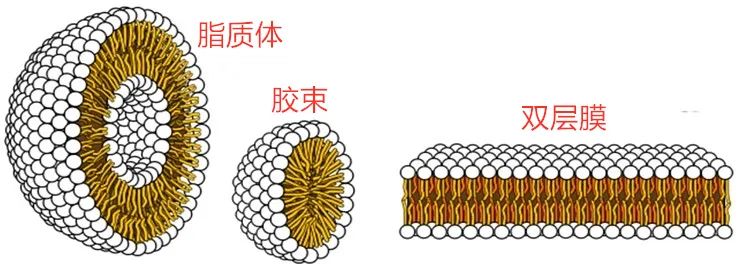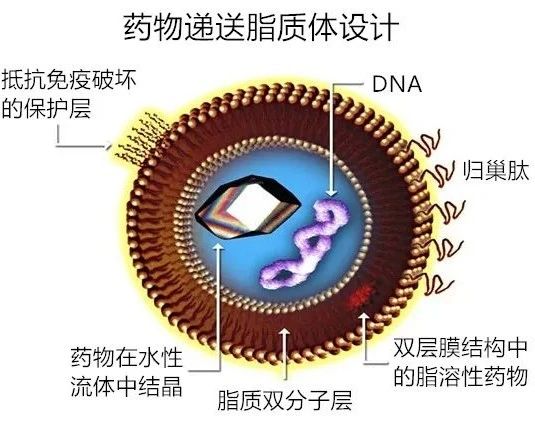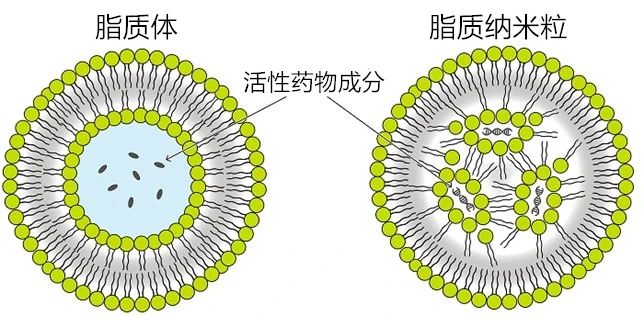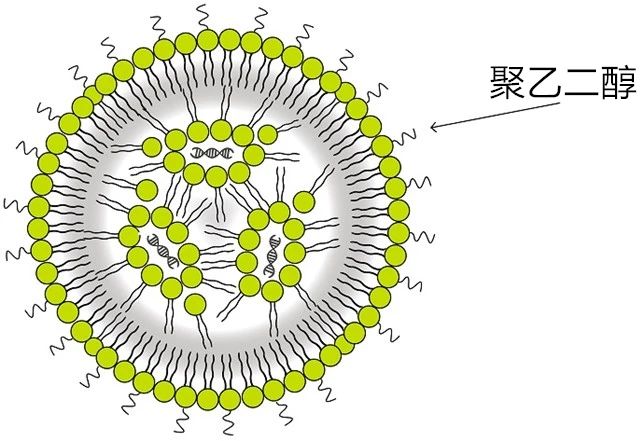自Alec D. Bangham于 1965 年发现脂质体以来,脂质体已被公认为首选的给药载体。
Since their discovery in 1965, by Alec D. Bangham, liposomes have been recognized as the drug delivery vehicle of choice.
脂质体具有良好的生物相容性,因此极少有不良反应发生。脂质体的双亲结构可以包裹亲水性和疏水性活性药物成分(API)。
Their biocompatibility results in minimal adverse reactions. Their amphiphilic structure allows encapsulation of both hydrophilic and hydrophobic active pharmaceutical ingredients (APIs).
最近,脂质体的同类产品——脂质纳米粒,也因其能够输送治疗用载荷(包括用于疫苗的 DNA 和 mRNA)而备受瞩目。
More recently the liposome’s analogous cousin, the lipid nanoparticle, has gained prominence because of its ability to deliver therapeutic payloads, including DNA and mRNA for vaccines.
通过在脂质体表面添加蛋白质,它们都能非常精确地传递有效载荷,从而与目标细胞类型高度特异性地结合。
They can both deliver their payload very precisely through treating their surface with proteins allowing highly specific binding to a target cell type.
什么是脂质体?
What are Liposomes?
脂质体具有生物相容性和生物可降解性,是研究最多的药物载体。脂质体具有独特的囊泡结构,这些囊泡由脂质双分子层组成。双分子层主要由两性磷脂组成,其内部为水性空间。
Liposomes are the most studied drug carriers due to the biocompatibility and biodegradability that they present. Liposomes possess a unique vesicular structure. These vesicles are composed of a lipid bilayer that is primarily composed of amphipathic phospholipid enclosing an interior aqueous space.
因此,我们可将任何想要包载的成分封装在脂质体的水腔中(如果成分具有水溶性/亲水性)或脂质双分子层中(如果成分具有脂溶性/亲脂性)。
As such, any cargo of interest can be encapsulated within liposomes in either the aqueous compartment (if it is water-soluble/hydrophilic) or within the lipid bilayer (if fat-soluble/lipophilic).
磷脂和鞘磷脂是膜的组成部分

图片来源:Chemistry LibreTexts
英国的A.D. Bangham 教授在其发表的一篇论文中,首次展示了包含溶质的脂质体的制备方法。
The preparation of liposomes with entrapped solutes was first demonstrated in a published paper by Prof. A.D. Bangham of the United Kingdom.
自诞生以来,脂质体一直作为输送药物和药品的载体而被开发。目前,许多脂质体制剂已应用于临床,用于递送具有抗癌、消炎、抗细菌、抗真菌、麻醉等疗效的药物和基因疗法。
Since their inception, liposomes have been explored as carriers for delivering drugs and pharmaceuticals. Currently, a number of liposome formulations are in clinical use to deliver anticancer, anti-inflammatory, antibiotic, antifungal, anesthetic and other drugs and gene therapies.
脂质体的特点
Features of liposomes
1.靶向性:脂质体可选择性地进入人体的某些组织或器官,如肝脏和脾脏。脂质体药物在肝脏中的浓度是普通药物的 200 到 700 倍,因此,它又被称为 "药物导弹";
1.Targeting: Liposomes can selectively enter certain tissues or organs of the human body, such as liver and spleen. The concentration of liposome drugs in the liver is 200 to 700 times that of ordinary drugs. Therefore, it is also called "drug missile";
2.持续释放:由于药物被脂质体包裹,扩散速度降低,脂质体制剂可延缓肾脏的排泄和代谢,延长作用时间;
2.Sustained-release: Since the drug is encapsulated in liposomes, its diffusion rate is reduced, which can delay the excretion and metabolism of the kidneys and prolong the action time;
3.降低药物毒性:脂质体磷脂双分子膜与哺乳动物细胞膜相似,可降低机体免疫反应,不易引起过敏等免疫反应。例如,两性霉素 B 脂质体可降低心脏毒性;
3.Reduce drug toxicity: Liposome phospholipid bimolecular membrane is similar to mammalian cell membrane, which reduces the body's immune response and is not easy to cause immune response such as allergies. For example, amphotericin B liposomes can reduce cardiotoxicity.
4.提高稳定性:长期储存的药物容易变质,但在脂质体分子层的保护下,药物氧化降解的可能性大大降低,从而延长了药物的保存时间;
4.Improve stability: Drugs stored for a long time are prone to deterioration, but under the protection of the liposome molecular layer, the possibility of oxidative degradation of the drug is greatly reduced, thereby prolonging the drug effect;
5.多种给药途径:脂质体可制成各种制剂,不仅可用于静脉给药,还可用于皮下、肌肉注射和粘膜给药,还可制成搽剂、口服液等;
5.Various ways of administration: Liposomes can be made into various preparations, not only for intravenous administration, but also for subcutaneous, intramuscular, and mucosal administration, and can also be made into liniments, oral liquids, etc.;
6.可控药物分布:由于脂质体具有靶向性,在制备过程中可以改变其表面性质,从而改变其靶向性,控制药物在体内组织和器官中的分布。
6.Controllable drug distribution: As liposomes have targeting properties, the surface properties can be changed during the preparation process to change their targeting properties and control the distribution of drugs in tissues and organs in the body.

来源:Multifunctional Nanocarriers.Torchilin,V.P.
《Advanced Drug Delivery Reviews》第58卷第14期
虽然脂质体作为药物载体有很多优点,但仍存在一些局限性。
Although the application of liposomes as drug carriers has many advantages, there are still some limitations.
首先,制备技术门槛给商业化生产带来了一定的困难;
First of all, the preparation technology brings some difficulties to commercial production;
此外,对于一部分水溶性药物,其包封率较低,且药物易从脂质体中渗漏;
In addition, for some water-soluble drugs, the encapsulation rate is low, and the drugs are easy to leak from the liposomes;
稳定性差也是脂质体商业化过程中亟待解决的问题,最近出现的冻干法或许是延长脂质体储存期的有效途径。
Poor stability is also a problem that needs to be solved in the commercialization of liposomes, and the current lyophilization method may be an effective way to extend the storage period of liposomes.
脂质纳米粒
Lipid Nanoparticles
20 世纪 90 年代,人们发现有必要采用基于磷脂以外的其他脂质成分开发新的纳米粒。脂质纳米粒代表了一种相对较新的胶体药物递送系统。
In the 1990s a need was identified for alternate approaches for nanoparticles based on lipid components other than phospholipids. Lipid Nanoparticles represent a relatively new colloidal drug delivery system.
与囊状脂质胶体系统(脂质体)相比,脂质纳米粒的主要优势在于其具有动态稳定性和刚性形态。
Kinetic stability and rigid morphology are major advantages that lipid nanoparticles have over vesicular lipid colloidal systems (liposomes).
脂质体vs脂质纳米粒
Liposomes vs Lipid Nanoparticles
脂质体和脂质纳米粒设计相似,但成分和功能略有不同。
Liposomes and lipid nanoparticles are similar in design, but slightly different in composition and function.
两者都是脂质纳米制剂,都是良好的药物输送工具,可以在脂质的保护外层内输送目标成分。不过,在应用中,脂质纳米粒可以有多种形式。
Both are lipid nanoformulations and excellent drug delivery tools that can transport targeted cargo within the protective outer layer of lipids. However, in applications, lipid nanoparticles can take many forms.

图片来源:exeleadbiopharma
脂质纳米粒具有类似脂质体的结构,特别适合封装各种核酸(RNA 和 DNA)。因此,它们是最常用的非病毒基因递送系统。
Lipid nanoparticles are liposome-like structure, which is especially suitable for encapsulating various nucleic acids (RNA and DNA). Therefore, they are the most popular non-viral gene delivery system.
在最近的研究《mRNA 脂质纳米粒 COVID-19 疫苗概述》 中,研究人员采用脂质纳米粒作为 mRNA 载体,充分展示了脂质纳米粒的重要性。
Their importance shown especially by the recent ‘Overview of mRNA-Lipid Nanoparticle COVID-19 Vaccines’ which employ LNPs as mRNA carriers.
传统的脂质体包括一层或多层环绕含水腔体的脂质双分子层,但并不是所有的脂质纳米粒都有连续的双分子层,因此不能称之为脂质囊泡或脂质体。有些脂质纳米粒是胶束状结构,将药物分子包裹在非水相核心中。
Traditional liposomes include one or more lipid bilayer rings surrounding an aqueous pocket, but not all lipid nanoparticles have a continuous bilayer that would qualify them as lipid vesicles or liposomes. Some lipid nanoparticles are micellar-like structures, encapsulating drug molecules in a non-aqueous core.
脂质纳米粒和类脂质体给药结构聚乙二醇化
PEGylation of Lipid Nanoparticles and Liposome-like Drug Delivery Structures
脂质纳米粒主要由阳离子脂质和其他脂质成分组成。这些成分通常包括属于磷脂酰胆碱(PC)类的中性磷脂分子和甾醇,如胆固醇。
Lipid nanoparticles are mainly composed of cationic lipids and other lipid ingredients. These usually include neutral phospholipid molecules belonging to the phosphatidylcholine (PC) class and sterols such as cholesterol.
另一种常见的脂质成分是所谓的 PEG 化磷脂——与磷脂头基共价连接的聚乙二醇(PEG)聚合物。
Another common lipid component is the so-called PEGylated phospholipid - polyethylene glycol (PEG) polymer covalently attached to the phospholipid head group.

图片来源:exeleadbiopharma
聚乙二醇化磷脂被用于许多基于脂质的药物载体,主要是在药物进行体内循环时,它们能为药物提供一种“隐形效果”。
PEGylated phospholipids are used in many lipid-based drug carriers primarily because they offer what is known as a stealth effect to the drug product as it circulates within the body.
人体的免疫系统会保护人体不受任何异物的侵害,药用纳米粒也不例外。为了提高运输效率,让包载成分有更多的循环时间到达预期的疾病部位,研究人员添加了聚乙二醇来保护这些纳米粒,防止血浆蛋白吸附到脂质体表面,从而延长药物的血液循环时间。
It drives the human immune system to protect the human body from any foreign bodies, and medicinal nanoparticles are no exception. To help improve transportation efficiency and allow more circulation time for the cargo molecules to reach the expected disease site, PEG is added to shield these nanoparticles by preventing blood plasma proteins from absorbing into the liposome surface, increasing bloodstream circulation lifetime.
聚乙二醇的第二个优点是提高了脂质体类纳米结构的稳定性。
The second benefit of PEGylation is that it improves the stability of liposome-like nanostructures.
传统的脂质体,尤其是尺寸小于 200 nm 的脂质体,本身可能并不稳定,容易相互融合并降低表面张力,这可能会导致封装药物的损失或不同囊泡包载成分的不良混合。
Conventional liposomes, especially liposomes smaller than 200 nm in size, may themselves be unstable and tend to fuse with each other to reduce surface tension. This may result in loss of encapsulated drug or unfavorable mixing of different vesicles’ cargo.
药品生产企业已经掌握了克服这一问题的方法,那就是在脂质体外部覆盖聚乙二醇等聚合物。
One way that drug manufacturers have learned to overcome this problem is by covering the exterior of liposomes with polymers such as PEG.
这些具有隐形功能的纳米粒催生了新一代脂质体制剂和各种临床获批药品。目前,聚乙二醇脂质体和脂质纳米粒已成为大多数癌症疗法的新典范。
These stealth-equipped nanoparticles have led to a new generation of liposome preparations and a variety of clinically approved products. PEGylated liposomes and lipid nanoparticles are currently the new paradigms for most cancer therapeutics.
最近,聚乙二醇脂质体引起了越来越多的关注,因为莫德纳和辉瑞的新冠疫苗都使用了聚乙二醇脂质体作为辅料。这两种 RNA 疫苗都包含信使 RNA (mRNA),并包裹在被称为脂质的油性分子泡中。
Recently, PEGylated lipids attracted more and more attention as a PEGylated lipid is used as an excipient in both the Moderna vaccine and the Pfizer–BioNTech COVID-19 vaccine. Both RNA vaccines consist of RNA, or mRNA, encased in a bubble of oily molecules called lipids.
每种疫苗都采用了专有的脂质技术,在这两种疫苗中,分子泡都涂有聚乙二醇的稳定化分子。
Proprietary lipid technology is used for each. In both vaccines, the bubbles are coated with Excipients for Lipid Nanoparticles and mRNA Vaccines.
参考资料
[1] Gao W, Hu C-MJ, Fang RH, Zhang L. Liposome-like Nanostructures for Drug Delivery. Journal of materials chemistry B, Materials for biology and medicine. 2013;1(48):10.1039/C3TB21238F. doi:10.1039/C3TB21238F. [NCBI]
[2] Kraft JC, Freeling JP, Wang Z, Ho RJY. Emerging Research and Clinical Development Trends of Liposome and Lipid Nanoparticle Drug Delivery Systems. Journal of pharmaceutical sciences. 2014;103(1):29-52. doi:10.1002/jps.23773. [NCBI]
[3] Theresa M. Allen, Pieter R. Cullis. Liposomal drug delivery systems: From concept to clinical applications. Advanced Drug Delivery Reviews. 2013 Jan;65(1):36–48







